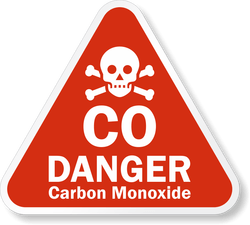Carbon monoxide sounds scary at any place or anytime. Unfortunately, it is a common gas which is found in any home or almost anywhere on earth. The important thing to remember about CO2 is that it is a colorless, odorless, and tasteless gas, which is why carbon monoxide poisoning is a high-risk danger.
So, how does carbon monoxide enter a home?
When you drive a car, the burning gasoline produces carbon monoxide. Which is why we need to be careful when leaving an engine running for too long inside a garage. Burning wood, propane, charcoal, or other fuels will also produce CO2. Let’s not forget about home appliances, which also create CO2. Sometimes, carbon monoxide gets trapped inside a home and can cause carbon monoxide poisoning. A perfect example is when a stovetop is left on without it burning. When the fuel does not burn thoroughly, there is a higher risk of accidental poisoning.
This is why it is a good idea to invest in an air quality monitor or get a professional air quality test on your property. We provide testing services for all building types, including homes, apartments, offices, schools, government, and medical facilities. You may be surprised as to what we find. Radon is also a quiet gas which is radioactive but naturally occurring. It can cause damage to our lungs and may lead to lung cancer over time.
Whether you think you may have a carbon monoxide leak or radon in your home or business, it is best to call a local professional for air quality testing. Our team of experts has conducted about 25,000 radon tests and installed roughly 10,000 radon systems throughout Dayton. We also serve all of the areas surrounding Dayton, from Springfield to the East, Piqua to the North, and Eaton to the West. From radon, mold, duct cleaning, and indoor air quality testing, we have your safety in mind at all times. If you have any questions, please call us at (937) 433-5202 or (513) 361-0015.
Learn more about how Environmental Doctor can help you with air quality testing here.
[Photo Kindly By Nazrin B-va]


